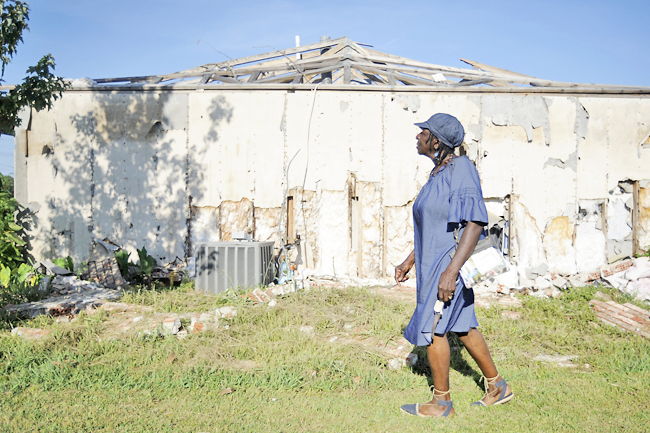EUTAW (AP) – There’s not much in Greene County, a place that stands out even in impoverished west Alabama, United States (US) for its neediness. So the tornado that settled down upon one of its most densely populated areas, a housing community full of seniors and low-income families, felt like a particularly cruel blow.
Swirling winds ripped roofs off apartments, toppled walls and shattered windows. Eula Dell Lanier, 64, cried out as her home came apart.
Yet the tornado was not one of the memorable monsters that devastated so many places in the south or midwest; no one was killed or even badly injured.
While about 40 homes in the 200-unit development were damaged, only a handful were as bad as Lanier’s house.
Still, the recovery seems tough to some residents nearly four months later because of what housing officials said are shortages of workers and supplies, geographic isolation and lethargy caused by generational poverty. And with what is typically the worst part of hurricane season ahead for the US Gulf Coast, the experience at William McKinley Branch Heights – named for an area civil rights leader – shows just how hard it can be to move on from even a small disaster when life was a struggle beforehand.

Lanier’s home was heavily damaged in the twister on April 13 and now she lives in a small replacement apartment nearby.
She’s so sad about the lingering damage and debris that she doesn’t drive by her old place, where crumbled brick walls still lie in the yard and a hole in the roof lets in rain. The inside reeks of mold and mildew.
“You come into Branch Heights and see all that stuff and it’s like they’re not even trying to clean it up. It’s depressing, and it just seems so slow,” she said. In a community of both privately owned homes and government subsidised apartments, Lanier owned her home and has insurance, but repairs have yet to begin.
While the area did not qualify for assistance from the Federal Emergency Management Agency because the damage was not bad enough, officials said they are trying to repair the community, and plenty of progress has been made.
The Alabama Rural Coalition for the Homeless provided USD30,000 for temporary housing for dozens of residents, who settled in a small motel for as long as two months because nowhere else was available in the rural county. School buses were rerouted to the EconoLodge, and donors provided clothes, shoes, food, gift cards and more to the victims.
Contractors are still repairing apartments in sweltering summer temperatures. About 125 residents displaced by the storm are back at Branch Heights, albeit in temporary homes.
Still, Greene County Housing Authority Executive Director Anita Lewis has heard the complaints about what feels like a slow-motion recovery to some.
The head of a group that provides assistance in some of the poorest parts of Alabama worries what the recovery at Branch Heights could portend for other underprivileged parts of the Gulf Coast region that might get hit this summer.
“I think one major disaster like a hurricane could be devastating for our area,” said Community Service Programmes of West Alabama Executive Director Cynthia Burton, whose programme assisted in Eutaw and operates in 10 counties.
Weak in terms of a tornado, the twister’s winds peaked at 145 kilometres per hour as it travelled about 29 kilometres across an area almost 145 kilometres southwest of Birmingham.
The entire county has only 7,600 residents, 80 per cent of whom are African American, and it typically has one of the worst jobless rates in the state. Nearly 30 per cent of its residents live in poverty.
The lack of an organised disaster volunteer group in Greene County complicated the recovery in Eutaw because coordinating needs and solutions was more difficult, according to Melinda Stallworth of the Governor’s Office of Volunteer Services, which is still assisting with the work. The agency hopes to get a group organised within a matter of weeks, before hurricane season has a chance to intensify, she said. “Recovery takes a while in the first place,” she said. “With these additional struggles it takes longer.”
Most homes are fine in Branch Heights, but blue tarps, fractured walls and debris piles are still visible on some streets. The mix of government housing and privately owned homes complicates the recovery, said the housing director.
But Branch Heights is hardly the only place to struggle after a natural disaster.
Poorer communities often have a harder time recovering from natural disasters than richer places because they get less aid, have less insurance, less credit and lack the resources to seek aid, according to the Wharton Risk Management and Decision Processes Centre at the University of Pennsylvania.





